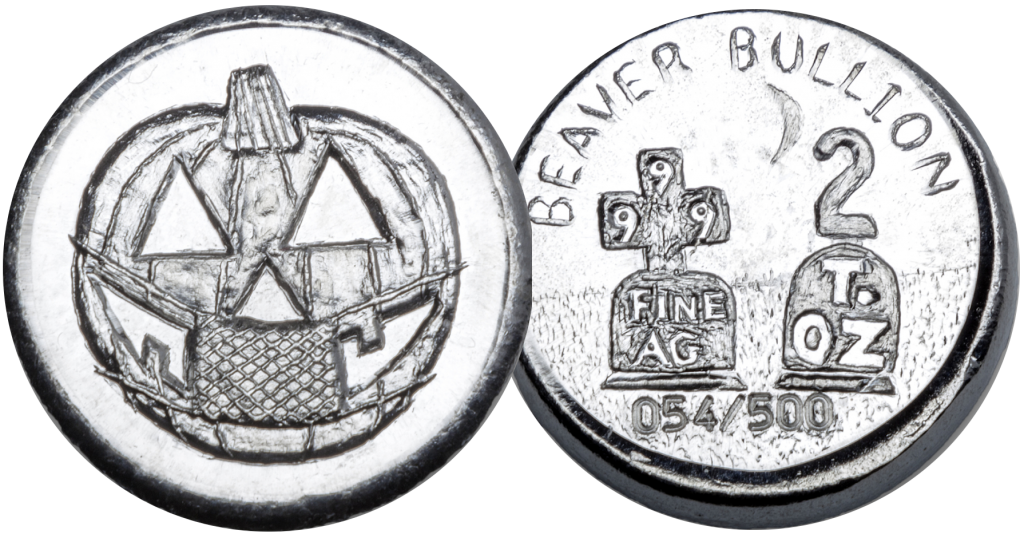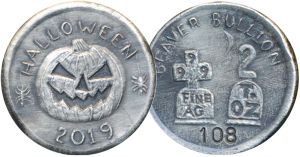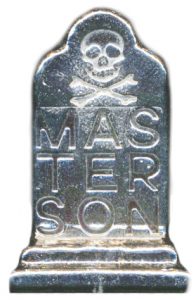Happy Halloween, coin collectors!
As you might already know, a spooky specialization isn’t hard to come by for collectors—especially topical collectors. The Royal Canadian Mint occasionally issues collector coins with a Halloween theme, including the “Haunted Canada” coins in 2014–16 and the “Spooky Canada” coin issued last year; however, private mints regularly mark the hair-raising holiday with a range of hair-raising collectibles.
Increasingly secularized and celebrated the world over – often on Oct. 31 – Halloween begins the three-day Christian observance of “Allhallowtide,” also known as the “Triduum of Death.”
It’s a time of the liturgical year similar to “Advent,” but instead of fasting in preparation for the coming of Christ, Halloween is observed by remembering and honouring the dead, including martyrs and saints (also known as “hallows”). Now far-removed from its religious roots, Halloween is followed by All Saints’ Day (also known as All Hallow’s Day) on Nov. 1 and All Souls Day on Nov. 2.
“Canadians have become so wild about Halloween we now spend more per capita on costumes, candy and décor than our U.S. counterparts do, with holiday-related spending that is second only to Christmas,” reported Hollie Shaw, of the Financial Post, in 2014.
In Canada, there are about four million children between the ages of five and 14—the “prime trick-or-treating age,” according to Statistics Canada.
But despite our penchant for demanding candy while dressed in costume (known as “guising” when it was popularized in Canada in the 19th century), the annual tradition is relatively under-serviced in the “silver stacker” community.
“Halloween themes are generally covered with the macabre,” said John Masterson, founder and owner of Beaver Bullion, Canada’s only hand-poured silver company, which is about to enter its seventh year of business.
“Skulls, skeletons and tombstones—that iconography is big, and I like doing skulls because they’re dark and creepy, but rounds made specifically for Halloween you don’t really see.”
With two young children “who just love Halloween,” Masterson was recently reintroduced to the spooky celebration from another perspective—that of a parent.
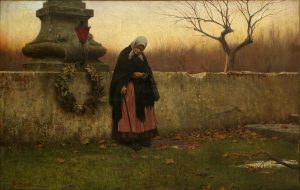
Czech artist Jakub Schikaneder’s 1888 oil painting, ‘All Souls’ Czech artist Jakub Schikaneder’s 1888 oil painting, All Souls’ Day, shows an elderly woman praying after placing a wreath upon the tombstone of a late loved one.
“For me, growing up with a Catholic background, we learned about Halloween – or All Hallow’s Eve – in high school, but it was also one of the three times a year you got candy,” he said, adding, “Now, the best part is seeing my kids having fun with it.”
With a pile of decorations and gourds at his house a month before Halloween, Masterson’s children were “already asking about costumes and getting excited about spooky ghosts and creepy tombstones” well before the spooky celebration.
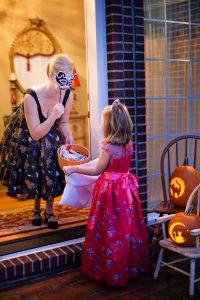
In Canada, about four million children are of the ‘prime trick-or-treating age,’ between five and 14.
TWO-OUNCE JACK-O’-LANTERNS
Inspired by his daughter’s delight when looking at pictures of pumpkins, Masterson’s latest Halloween creations are two-ounce high-relief silver rounders featuring a menacing jack-o’-lantern.
“It has the highest relief of anything I’ve ever done, and I’ve pushed out about 250 of them so far,” Masterson said of his first jack-o’-lantern rounder issued last year in time for Halloween.
On the jack-o’lantern side, the round also includes “HALLOWEEN” at the top, with a spider dangling from a web on each side and the “2019” year-date at the bottom.
The round’s weight and fineness are included in tombstones on the opposite side, which also includes “BEAVER BULLION” at the top and a serial number at the bottom.
“Normally, with hand-engraved pieces I’ve made in the past, I’m basically marking the surface,” said Masterson, who added silver is porous and “marks show up very clearly.”
“Most coins are generally low relief, but I wanted to do something thicker, like the old Greek coins, so I made the pumpkin in really high relief.”
Because it was well-received, it marked the beginning of an annual Halloween series that continued last year with another two-ounce silver rounder featuring a jack-o’-lantern—this time with a mask in a nod to the COVID-19 pandemic. Last year’s rounder has a mintage of 500 and once again features the fineness and weight in stylized tombstones.
‘TRICK OR TREAT FOR UNICEF’
From 1955 until 2006, when the United Nations Children’s Fund (UNICEF) focused its fundraising to online platforms, the “Trick or Treat for UNICEF” campaign was held in Canada, where trick-or-treaters would collect coins for donation along with their treats. The program raised more than $100 million altogether.
‘SILVER STACKERS’
A member of the Royal Canadian Numismatic Association; Ontario Numismatic Association; Canadian Association of Token Collectors; Toronto Coin Club; and Canadian Centennial Collectors’ Club, Masterson belongs to a collecting community known as “silver stackers.”
They collect silver in various forms, including not only rounds but coins, bars, cubes and even tombstones.
Art rounds date back to at least the 1970s, when rounds were made for Christmas, Mother’s Day and Valentine’s Day, to name a few.
“This is the only Halloween die piece I have,” said Masterson, of the two-ounce jack-o’-lantern, but he has four sizes of silver skulls, which are “mostly made by pouring into graphite mold” and sold year-round.
HALLOWEEN HISTORY
Scottish and Irish immigrants fleeing the mid-19th-century potato famine brought the Pagan tradition of All Hallow’s Eve to Canada.
Settlers would gather – sometimes in farmhouses – to mark the last day of summer by bobbing for apples, playing “snap-apple,” burning bonfires and more.
“We don’t know a lot about what they really would’ve been doing, other than they’ve been very anxious about the winter and the possibilities of surviving the winter. These are societies that didn’t have a lot of resources, were very troubled by this, and the festival they celebrated Samhain, meaning ‘summer’s end,’ was one that was of stock-taking, essentially,” said Nick Rogers, author of the 2002 book Halloween: From Pagan Ritual to Party Night, in a CBC Metro Morning radio interview that year.
“They may have made some sacrifices to the gods in order to hope for a mild winter, and they told a lot of stories about rebirth as well. It’s a holiday of anxiety and a holiday of the supernatural, really; it’s a time when they believed the boundary between the natural and the supernatural worlds was very thin, indeed.”
In 1911, in what’s the first North American reference of people asking for treats on Halloween, a newspaper in Kingston, Ont., reported children would be “guising” on that night at about 6 p.m.
Much like today, they would visit neighbours and businesses “to be rewarded with nuts and candies for their rhymes and songs,” added Rogers.
“Thereafter, the night was reserved for the pranksters, or for the young men and women who dressed up and went off to private dances or parties.”

